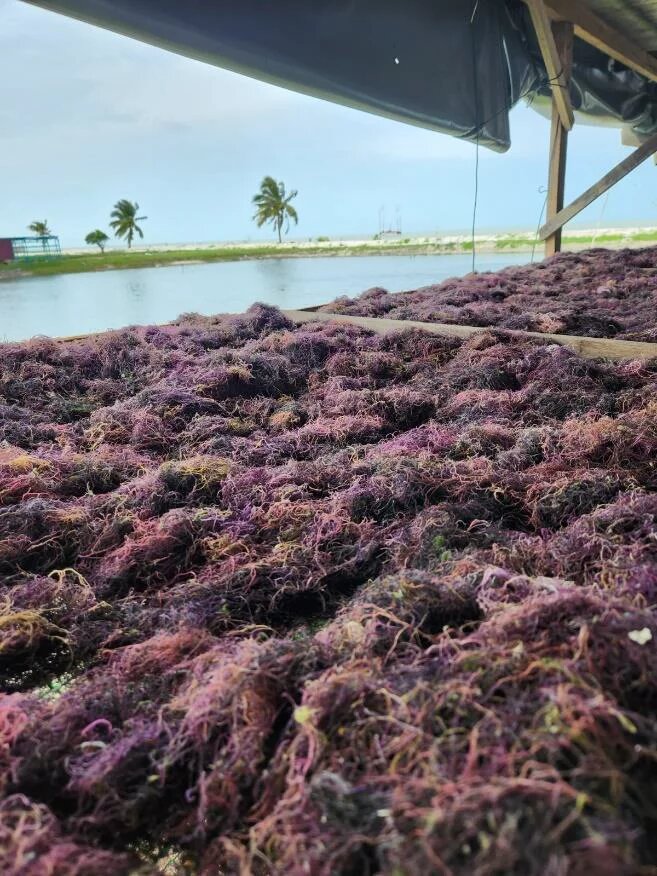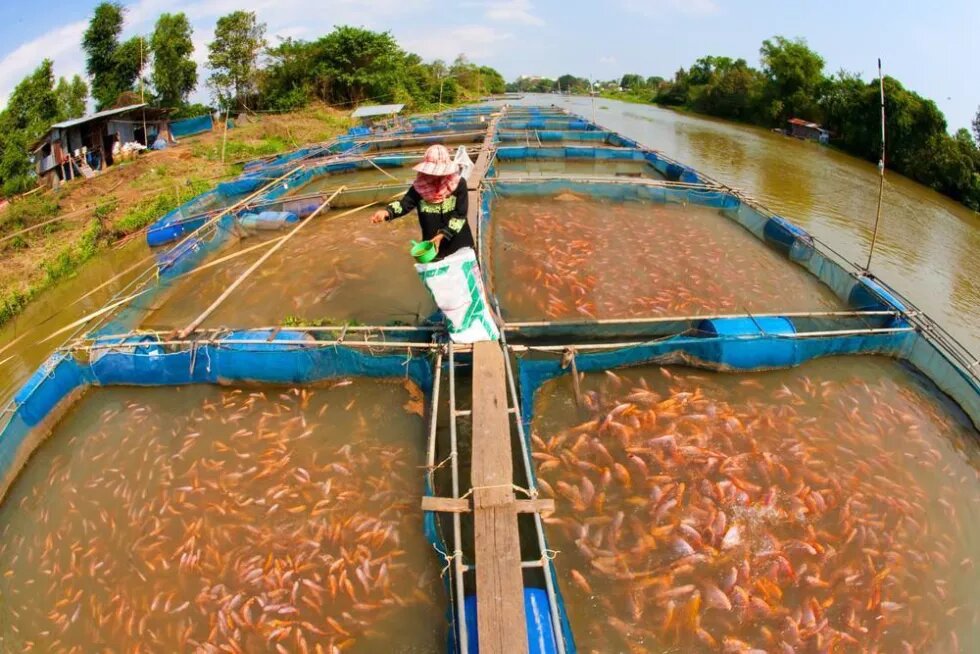
Regenerative aquaculture is emerging as a promising solution to address the sustainability challenges faced by the aquaculture industry in Southeast Asia. A mutually beneficial approach integrating Gracilaria seaweed and brackish water tilapia in pond systems in Johor, Malaysia, has shown great potential for establishing regenerative practices for the future.

Aquaculture renewed for sustainability
Over the past 20 years, pressure on the aquaculture sector to adopt complete sustainability measures has improved governance, technology, site selection, and management in many instances. However, many operations still face difficulties, such as those caused by diseases, new pathogens, pollution, harmful algal blooms, and climate change. Given its rapid growth, dependence on the environment, and the shifting environment in which all food systems function, the aquaculture industry is now increasingly exposed to these stressors, especially in Asia, which accounts for 92% of global aquaculture producers.
Regenerative aquaculture is an approach to aquaculture, farming aquatic organisms like fish, shellfish, and seaweed, emphasizing sustainability, ecosystem health, and social responsibility. It goes beyond traditional aquaculture methods by focusing on practices that minimize negative environmental impacts and actively contribute to the restoration and regeneration of aquatic ecosystems.
As the world's leading producer of aquaculture products, the region plays a crucial role in global seafood production. However, unsustainable practices, overfishing, and environmental degradation have raised concerns about the long-term viability of this industry. Regenerative aquaculture offers a sustainable alternative that aims to restore ecosystems and ensure coastal communities' prosperity.
Enhancing the sustainability of regenerative aquaculture utilizing red seaweed and brackish water tilapia in pond systems
In this context, the integration of red seaweed (the Gracilaria species) and brackish water tilapia within pond systems shows an innovative approach that demonstrates the regenerative principles of sustainable resource utilization and ecosystem restoration. This combination not only enhances the ecological balance of aquaculture but also offers economic benefits and diverse culinary opportunities. Since 2021, the author, Universiti Malaya’s (UM) seaweed scientist Dr Adibi Rahiman Md Nor, has been researching a regenerative aquaculture project between Gracilaria sp. and tilapia using a land-based system in Muar, Johor, Malaysia. This is a research and commercialization collaboration between UM and a local company, Laman Alamjaya Sdn Bhd (LASB), creating new opportunities at abandoned shrimp ponds. LASB works closely with the local community, especially unemployed women, by providing them with job opportunities.
This project is the first red seaweed farm being established in Peninsular Malaysia at a commercial scale, and they managed to produce sustainable seaweed production with premium quality. The integration of Gracilaria seaweed and brackish water tilapia in pond systems is a mutually beneficial approach. They could observe that the seaweed has provided shelter, breeding nests, and serves as a natural food source for tilapia using this method. Regenerative aquaculture reduces the need for external feed inputs (production costs) and enhances the sustainability of the system.
Another advantage of this method is that tilapia excrete nutrients that promote Gracilaria growth, while Gracilaria absorbs excess nutrients and improves water quality for the fish. This natural nutrient cycle eliminated the need for artificial fertilizers. The dense growth of seaweed also acts as a biological filter, removing particulate matter and pollutants from the water, and creating a cleaner environment for tilapia. Seaweeds also contribute to reducing greenhouse gas emissions from the pond system because they have among the highest rates of photosynthesis, which they use to convert dissolved carbon (C) from seawater into organic molecules and biomass. The growth of Gracilaria captures and stores atmospheric carbon dioxide (CO2). This carbon sequestration process using a regenerative aquaculture system can help mitigate climate change and reduce ocean acidification.
Economic and gastronomic benefits
The integration of Gracilaria and brackish water tilapia can have several economic and gastronomic advantages such as a diverse product range produced from the regenerative aquaculture pond. They recognize the power of nature-based solutions in addressing environmental issues and firmly believe that regenerative aquaculture plays a vital role in promoting sustainability and mitigating the impacts of climate change. Regenerative aquaculture offers a range of benefits as a nature-based solution. The combination of tilapia and Gracilaria allows for the production of multiple marketable products, including fresh seafood and value-added seaweed products such as seaweed salads and nuggets. The seaweed that has been produced is now a ready-to-eat product and is being promoted as a nutrient-dense superfood for a healthier and more vibrant lifestyle offering a more sustainable culinary experience in Malaysia. This versatile superfood brings possibilities to create new tantalizing recipes or delightful garnishes with vibrant flavors, nutritional benefits, convenience and value for money.
Since 2021, hundreds of people have been exposed to regenerative aquaculture in Malaysia through technology and knowledge transfer to coastal communities. The immediate impacts include the improvement of livelihood among local communities, enhancement of the seaweed value chain and production of good quality seaweed for human consumption. This research also led to discoveries that improved seaweed farm management and optimized the extraction of valuable compounds for various industries, including food, cosmetics, bioplastics, and animal feed.
Regenerative aquaculture also has reduced input costs by reducing the need for artificial feeds and fertilizers. LASB managed to lower production costs and improve the economic viability of aquaculture operations. They also have created new market opportunities which satisfy consumer demand for sustainable seafood and seaweed products for premium pricing and niche markets. If scaled up, regenerative aquaculture between seaweed and fish can be used as a tool for poverty alleviation and socio-economic empowerment. Though poverty is a complex and multifaceted issue, the sustainable growth of the seaweed industry can contribute towards poverty reduction and create opportunities for marginalized communities.
The team is dedicated to the bigger goal of promoting gender equality and creating an inclusive and diverse environment within the aquaculture industry. We recognize that gender inequality persists in various sectors, including aquaculture, and firmly believe that this imbalance must be addressed for the industry to reach its full potential.
A promising foundation with clear benefits
The regenerative aquaculture method is best demonstrated by the combination of brackish water tilapia with Gracilaria seaweed in pond systems. This innovative approach encourages the responsible use of resources, improves ecosystem health, and provides a range of market opportunities. The combination of Gracilaria and tilapia stands out as a viable model for the future of regenerative aquaculture as the world strives for more sustainable and ethical aquaculture practices.
__
Adibi M. Nor is a marine biologist and aquaculturist by training, with 20 years of experience in the fisheries sector. He was an employee of the Department of Fisheries (DOF) and now is a senior lecturer and PhD programme coordinator at the Institute for Advanced Studies (IAS), Universiti Malaya.
The views expressed in this article are not necessarily those of Heinrich Böll Stiftung.





